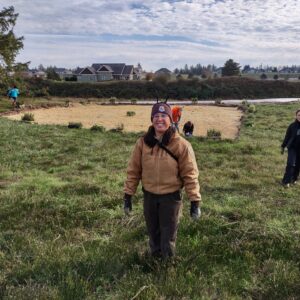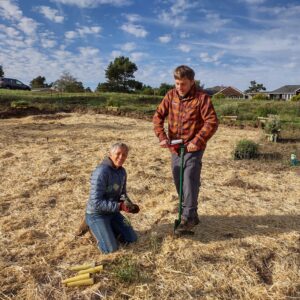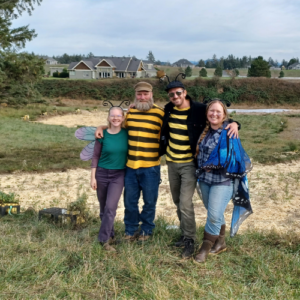
The sun was shining on Halloween as we joined with the U.S. Fish and Wildlife Service and more than 30 volunteers at our Neacoxie Prairie Habitat Reserve near Gearhart to plant thousands of plugs for native pollinator species.
Many helpers donned wings and antennae for our Hocus-Pocus Pollinator Planting, the last event of our 2023 Together in Nature series at North Coast Land Conservancy. Besides it being Halloween, the costume pieces were also a nod to the main purpose of this stewardship work, which is to enhance the coastal prairie habitat and make it more inviting for our local pollinators.
Some of the plants included in the project were early blue violets (Viola adunca), western pearly everlasting (Anaphalis margaritacea), Douglas aster (Symphyotrichum subspicatum), and goldenrods (Solidago).
To prep the prairie for the planting, NCLC’s stewardship team first removed a layer of topsoil from a few designated plots. This treatments mimics a natural disturbance and gets rid of the invasive grasses and Scotch broom that have infiltrated the prairie.
Native plants on the coastal prairie are used to living and thriving in sandy soils and have done so for centuries before invasive species were introduced. The sandy plots were then covered with straw, to help retain moisture without providing nutrients that promote weed growth.
We created similar plots on the reserve nine years ago and added native plants. It has shown progress year after year, demonstrating the success of topsoil removal as a weed-treatment process before planting occurs.
We can use Neacoxie Prairie Habitat Reserve as a model for restoration at our other habitat reserves on the coastal prairie, including Reed Ranch.








Comments